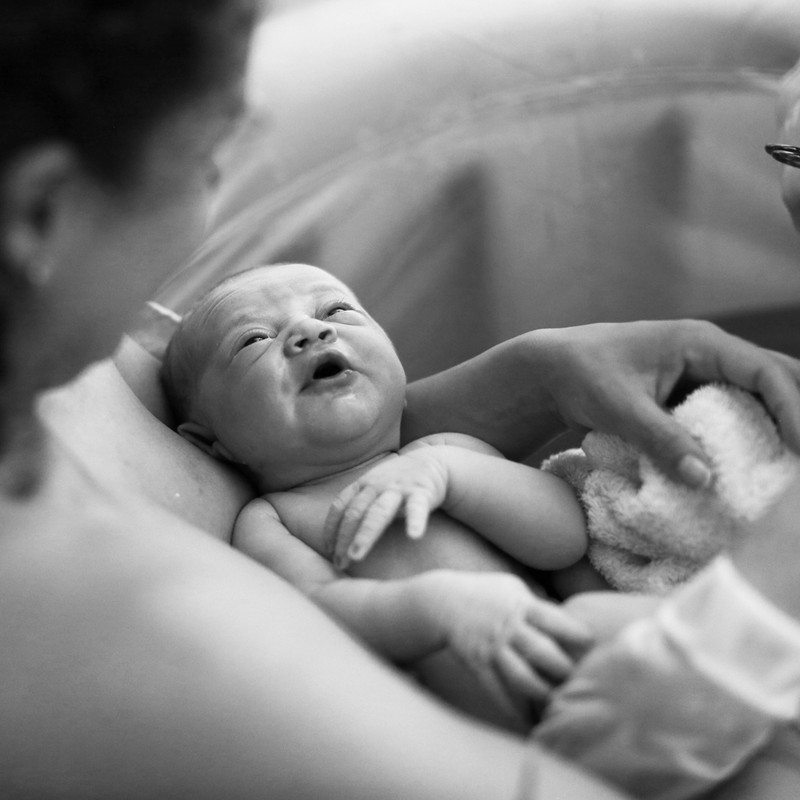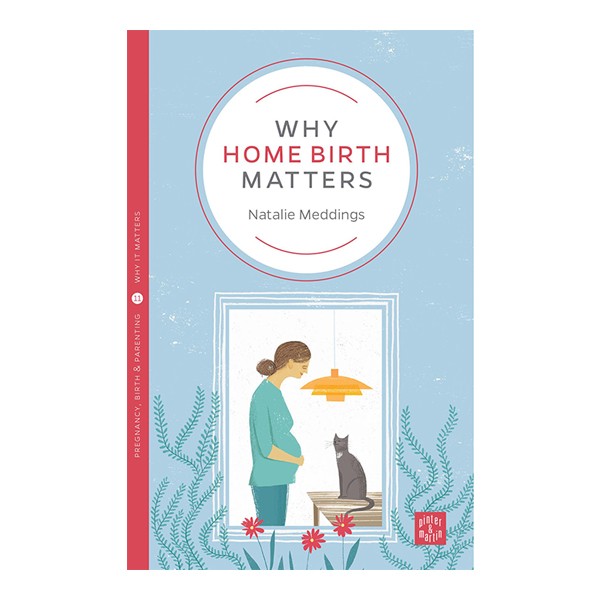Would You Have A Home Birth?
To find out everything you need to know about home births – including the advantages, how to plan for one and whether the safety statistics really add up – we spoke to doula, author and co- founder of support network Tell Me A Good Birth Story, Natalie Meddings…
How popular are home births in the UK?
About 15,000 women give birth at home in the UK each year, which is equivalent to just over 2% of the pregnant population. However, there’s evidence to suggest this would be more like 10% if there were greater service provision, and if women were given proper information about having a home birth.
The main reason most women don’t consider having a baby at home is because everyone around them is having their babies in hospital. People assume birth is by default dangerous, rather than what it is – an ordinary, healthy function of the female body. It’s often assumed hospital is the safest place to give birth, but the latest research shows women have a higher chance of having medical interventions on a standard labour ward than anywhere else.
What are the advantages of a home birth?
First and foremost, you shouldn’t underestimate the power of being at home when giving birth. In order to give birth well, you need to be able to switch off the front cortex of the brain and allow your body to do what it’s designed to do – if you’re in familiar surroundings this can help reduce the fear and empower you.
People fail to consider giving birth amounts to the most sensitive, intimate, potentially exposing act of their life, yet the majority of us opt to undertake the experience in an environment that is entirely alien, i.e. a hospital. In a routine maternity care setting it can be hard to relax, and all too easy to remain alert and vigilant. This triggers adrenalin, and adrenalin inhibits the flow of the birth hormone oxytocin that drives the whole process and creates contractions.
Is it true the rates of forceps and caesarean deliveries are lower in home births?
There’s a greater chance of instrumental delivery being necessary with medically managed births, for example, when the mother has had an epidural. If she’s been lying back, immobile and numb for many hours, she can’t feel where or how to push and it’s also harder to change position to enlist gravity, open the pelvis and make room for the baby to come out. In this situation, it’s usually a ‘time’s up’ scenario.
On labour wards, there’s a pretty strict one-hour-to-push rule and with no recourse to other options, like changing position, the doctor usually steps in to perform an instrumental delivery, or if the situation warrants it, a caesarean.
What are your pain options if you have a home birth?
Your midwife can bring gas and air (Entonox), which can be a real help. However, not having medical pain relief such as an epidural doesn’t mean you have to grit your teeth and bear it – practical measures such as having lavender oil to hand (it’s a natural painkiller); a warm shower; a frankincense oil massage; and having the relief of a warm birth pool can make a huge difference.
How many midwives will come to your home?
One midwife attends you in labour and then when the baby isn’t far away, a second usually arrives. So ideally there are two pairs of hands – one takes care of the mother, the other the baby, and of course they’re also there to support each other. Home birth midwives are highly skilled and have the same equipment they would have in hospital.
Is a home birth safe?
For women with uncomplicated pregnancies, birth at home is very safe – overall, as safe as other medical settings. While first-time babies do have a slightly increased risk of a poor outcome, some women feel the risk is small enough when set against the high chance of having a straightforward birth without interventions overall, and so opt to give birth at home.
Birth at home is safe in the UK because we have good maternity care provided by skilled midwives during labour, as well as an excellent standard of antenatal assessment in pregnancy, which confirms if both mother and baby are well equipped for labour.
What happens if something goes wrong?
Around 45% of first-time mothers have to be transferred to hospital during a home birth, alongside 12% of second and subsequent mothers. Urgent transfers are very rare – and good midwifery care is there to keep an eye on any early signs of problems. If these do occur, or the mother simply requests to transfer for pain relief, or because she would just prefer to be in hospital, an ambulance is called.
What if you need stitches?
Most tears are second degree, which means they can be sutured at home by the midwife attending you. In more complicated situations, which are rare, the mother would be transferred to hospital and suturing would be done by a doctor.
How can you plan for a home birth?
Let your midwife know as soon as you’ve decided – she will then refer you to your local homebirth team, who will arrange to come to your home for a meeting.
The other misconception about giving birth at home is that it has to be done in a birthing pool – while this is definitely an option, it’s not a given. If you decide to have a birthing pool, you can rent one from a home birth group. In my opinion, smaller ones are best as they are easy to inflate and quicker to fill and empty. My favourite is the ECO mini from Birthpool in a Box. It’s worth having a road test of it in advance, to make sure you’ve got the right tap adaptors and to work out where you want to have it – a brightly lit kitchen may seem like the best place but come labour, you’ll actually want somewhere dark and more private.
How do you know if your home is suitable?
A member of your local home birth team will come round to make an initial assessment of your home. In only very rare circumstances would it be deemed unsuitable – for example, a flat that had extremely limited access, or a remote location where there was no option for transfer to a local hospital.
What happens afterwards?
After the baby arrives, it takes a while for the placenta to be delivered. Following this, the mother will be checked, along with the baby, who will also be measured and weighed. After that, it’s time to get yourself clean, comfortable and cosy in bed with your baby – the whole process can take a couple of hours.
Is there anyone for whom a home birth isn’t suitable?
Unless you have serious health issues, a home birth is suitable for everyone. Everyone has a right to be cared for by a midwife at home should they choose to be. If a mother has complex needs, it’s a good idea to have a meeting with a consultant midwife to get a good plan, and in most cases, the mother’s needs can be discussed, managed and accommodated.
If a mother makes an informed decision to birth at home, and support is denied, she should contact AIMS.org and Birthrights.org. A previous caesarean is no longer a bar to having a baby at home and HBAC as it’s called – home birth after caesarean – is becoming relatively commonplace.
How can we find out more?
Visit HomeBirth.org, or check out my book, Why Homebirth Matters. It may also be useful to contact TellMeAGoodBirthStory.com so you can find some ‘homebirth buddies’ – women who had positive experiences giving birth at home and who’ll be able to share their experiences. A local Positive Birth group would provide the same thing, and you can find out about your local one on PositiveBirthMovement.org.
Natalie Meddings is a doula and mother of three. She founded and runs TellMeAGoodBirthStory.com and is the author of Why Home Birth Matters, published by Pinter & Martin (£7.99)
DISCLAIMER: We endeavour to always credit the correct original source of every image we use. If you think a credit may be incorrect, please contact us at info@sheerluxe.com.



